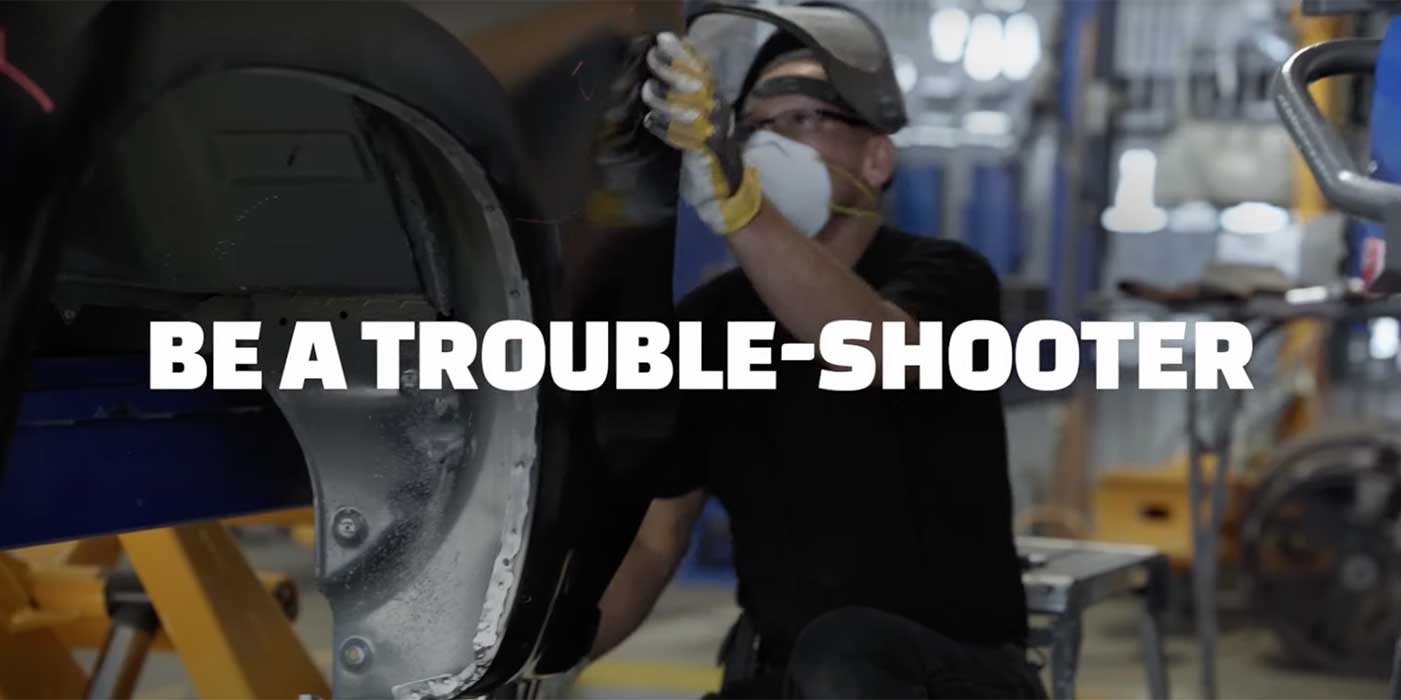In my last article, I wrote about the crazy terminology used in the collision industry by both repairers and insurers. In this article, I want to address common sense — or the lack of it.
Significant Challenges
Over the past couple years, like many industries, the collision repair industry has experienced significant challenges initially brought on by COVID and the interruption in manufacturing and slowdown in the transportation of goods. This caused a shortage of products, including new car computer chips and replacement parts. Add to this the shortage of quality technicians, and you have a recipe for disaster. And, of course, we’re dealing with a poor economy also caused by the pandemic but also, I believe, caused by the decisions of the current administration.

Collision repairers are not the only ones suffering; the insurance industry is being hit extremely hard as well. This is why insurers are aggressively trying to minimize repair costs … and also why they’re eliminating outside claims people and announcing substantial layoffs and terminations. For example, GEICO recently reduced its workforce by 2,000 employees, or 6%.
Collision repairers must step out of the box they’re in and work “on” their business rather than merely “in” it.
At this point in time, collision repairers need to reevaluate their businesses and do whatever is necessary to not just survive but thrive. To do this, they must first step up and out of the box that they’re in and work “on” their business rather than merely “in” it.
Understanding that repairers are merely victims of the current economic challenges and not the cause, let’s use some common sense and consider changes in our operations that will not only positively affect the bottom line and offset the adversities but also correct an issue that has gone unaddressed for far too long.
Storage (Secure Containment)
Let’s address storage (or “secure containment” for shops located in states that may not allow “storage” charges) first.
Consider that most repairers assess storage charges when a vehicle is deemed to be a total loss or when repairs have been completed and the repairer is no longer working on the vehicle. This is perfectly reasonable, since the shop has what is called “bailment,” or a legal relationship between two parties in common law where assets or property are transferred from a bailor to a bailee. In this relationship, the bailor transfers physical possession of a piece of personal property to the bailee for a period of time but retains ownership. A bailment for the mutual benefit of the parties is created when there is an exchange of performances between the parties. In this instance, it would be either for repair … or safe storage or containment.
An aspect of bailment is a repairer having the “care, custody and control” of another’s vehicle. Regardless of whether it’s your customer’s or if it became the insurer’s property after a total loss settlement, the repairer is responsible for it and should receive compensation for that risk until the bill is paid in full and the vehicle leaves the premises.
Collision repairers, like other business people, are dealing with a poor economy caused by the pandemic and other factors.
As we all know, a repairer’s payday is generally when the vehicle leaves the premises, either with a happy customer or on a roll-back. All of the time between the vehicle coming to the shop until it leaves the shop creates either profitability or liability for the repairer. Profitability is tied directly to efficiency and productivity, and the more efficiently the repairs go, the more profit is made. When repairs grind to a halt, liabilities increase, and efficiency, productivity and profitability are lost and can never be recovered.
What about when a repair is held up due to a customer’s indecision? As I wrote about in my article, “How Do You Want Your Eggs?” in the July 2023 issue of BodyShop Business, it’s about getting the customer to make a decision and direct the repairer as to how he or she wishes to have the vehicle repaired regardless of whether an insurer is involved or not. How long should a repairer provide protection for an idle vehicle it’s responsible for should it become damaged or stolen? And should it do so at no charge?
If you agree that a fee for secure containment should be assessed, the next questions are: When should it begin, when should it end, and how much should you charge?
When coaching my repairer clients, one of the first things I do is help them develop a well-crafted repair authorization. Nothing should happen in a collision repair shop until the repair agreement/contract is signed by the customer. Within that agreement, I recommend that the repairer provide up to 72 hours of free storage/secure containment, after which daily fees will commence (at a prescribed rate of either inside or outside containment) until repairs recommence or the vehicle is removed from the premises. This includes total losses, repairs in process and completed repairs. Should the interruption be resolved and the repairs can once again proceed, containment fees would then cease only when the repair is reinstituted. Should another delay arise, additional fees would again be assessed until resolved. Let’s face it: We don’t want the vehicle to remain idle unless you’re making money on it. Most would rather complete the repair uninterrupted, be paid and get it over the curb so they can get on with the next one and repeat. Assessing such fees will no doubt encourage all parties to do what they need to do to move the repair forward or remove the vehicle.
As it is, with the many delays due to supply chain issues, I know many repairers are merely taking it on the chin and absorbing the costs and liabilities — but they shouldn’t, any more than a hospital wouldn’t charge for a patient’s room due to delays in scheduling, awaiting approvals, supplies or donor organs.
While insurers and other industries are rethinking their business strategies, repairers need to do the same. Providing free bailment of a vehicle may be “the way it’s always been done”; however, it is no longer good business. Today’s shop owners and managers need to reassess their old way of thinking and begin conducting business based on sound thinking and common sense.
Who offers their services for free — especially businesses with liabilities? Vehicle storage facilities charge a fee, and hospitals charge daily for their rooms, as do hotels and convention centers. No one would expect any of these businesses to provide their services at no charge. And you know who else believes this to be true? Consumers. They understand the need for businesses to assess fees for their services and, when confronted with the cost, will help to eliminate delays to expedite their repair.
Administrative Activities
The definition of “administration” is the process or activity of running a business, organization, etc. While this definition has been around since the 15th century, the administrative activities of collision repairers have consistently grown more time-consuming over the past decade due to insurer involvement, advanced technology and materials in vehicle construction, accessing and obtaining OEM repair mandates and recommendations, and the added time and activities in keeping customers (and those pesky rental car companies) informed.
Additionally, repairers are spending considerably more time responding to insurer demands for photos, estimates, copies of invoices, scans, frame/structural, alignment and calibration reports — and not being compensated for this.
Many repairers across the country are still billing the same way they did 20-plus years ago, and while they know they’re doing more and spending more time serving their customers, they’re not accounting for it in their billing. I can assure you that if you don’t value the time needed to take care of your customers, then you surely can’t expect others to do so!
Regardless of the economy, slowdown in the supply chain, insurers’ efforts to contain costs (at almost any cost), and the short-term and long-term challenges facing our industry, most will agree that while we are not the cause of these situations, we too must adapt and begin to plug the holes in the dam. The simple solution is good business … which only requires some basic common sense.














